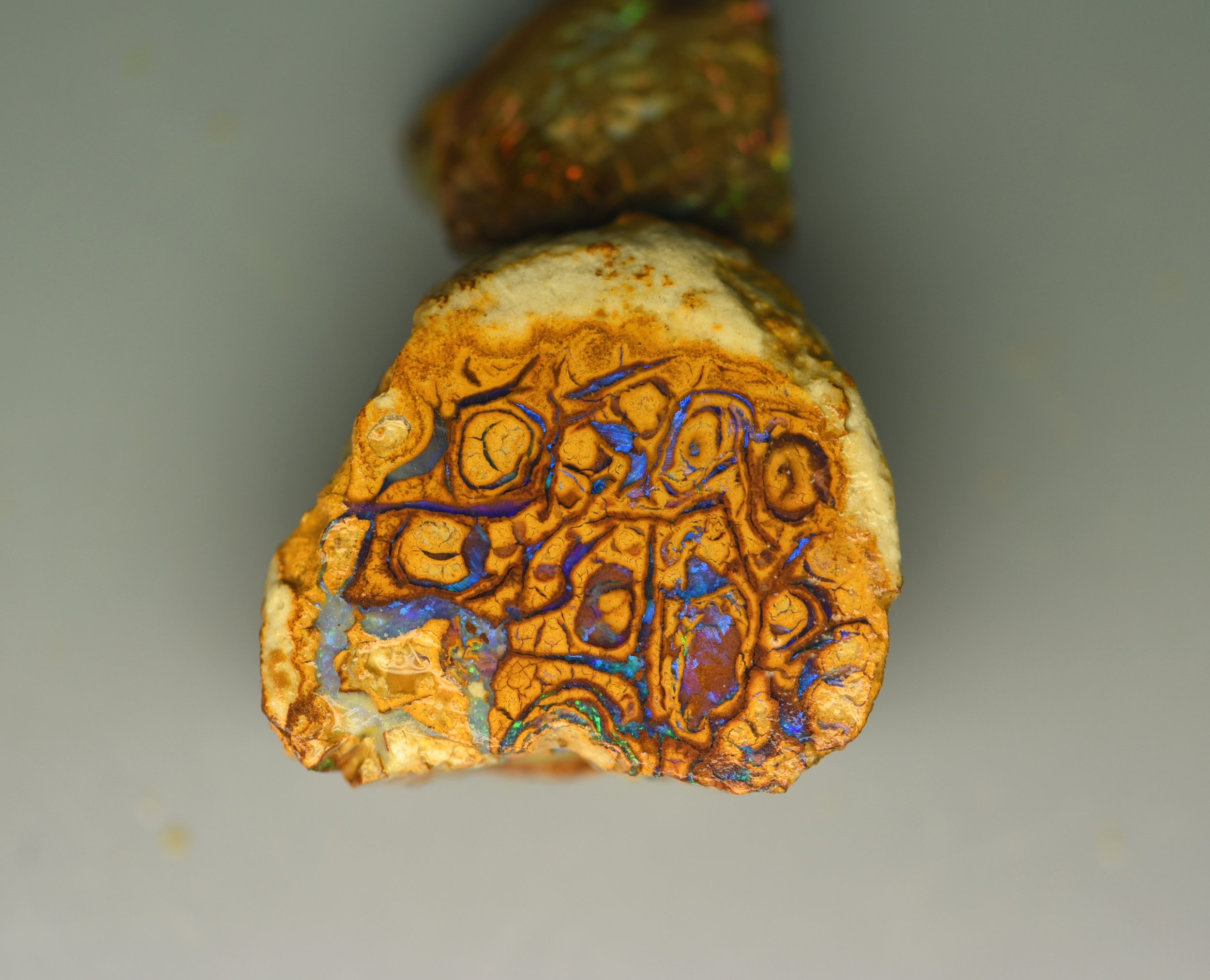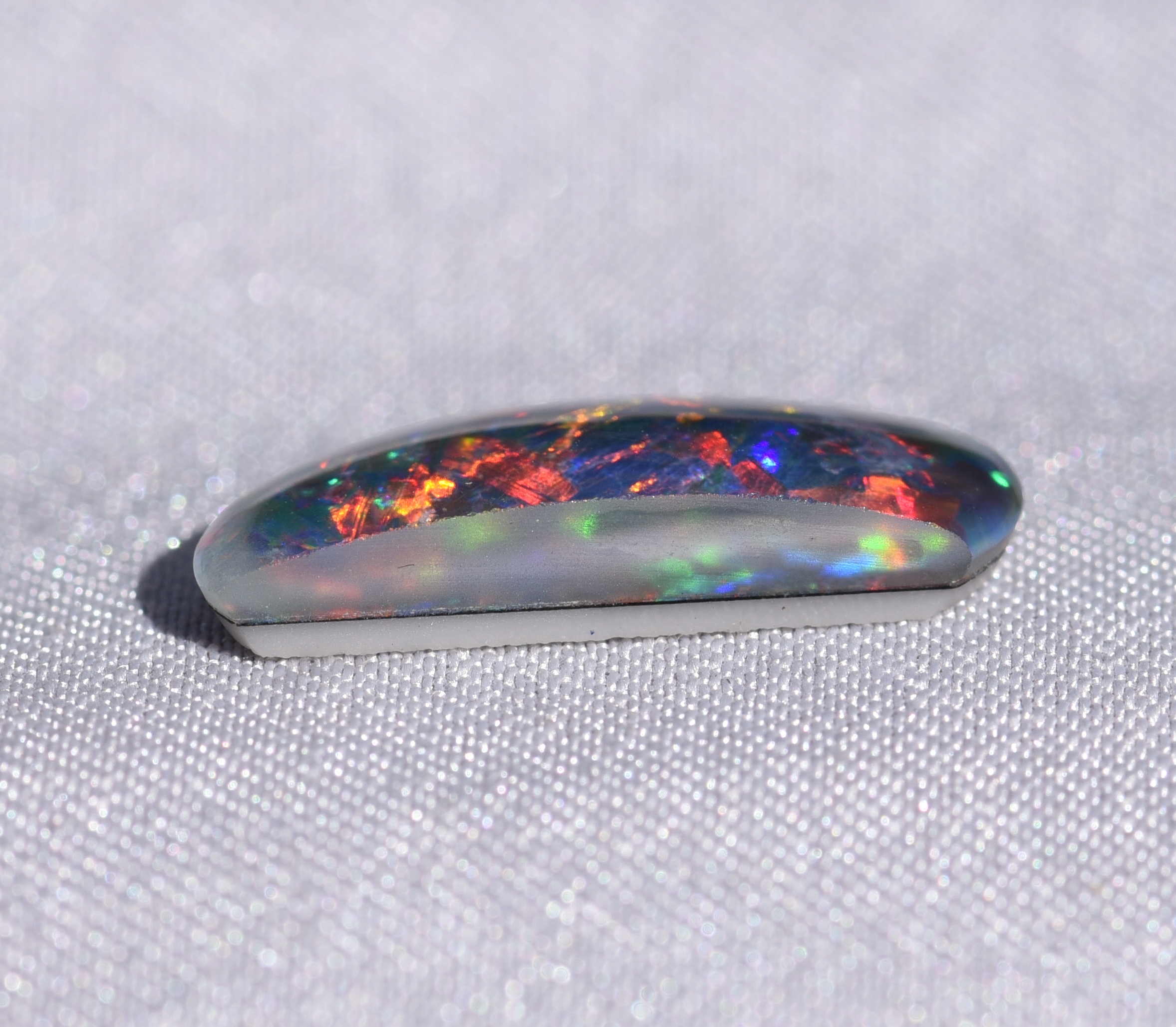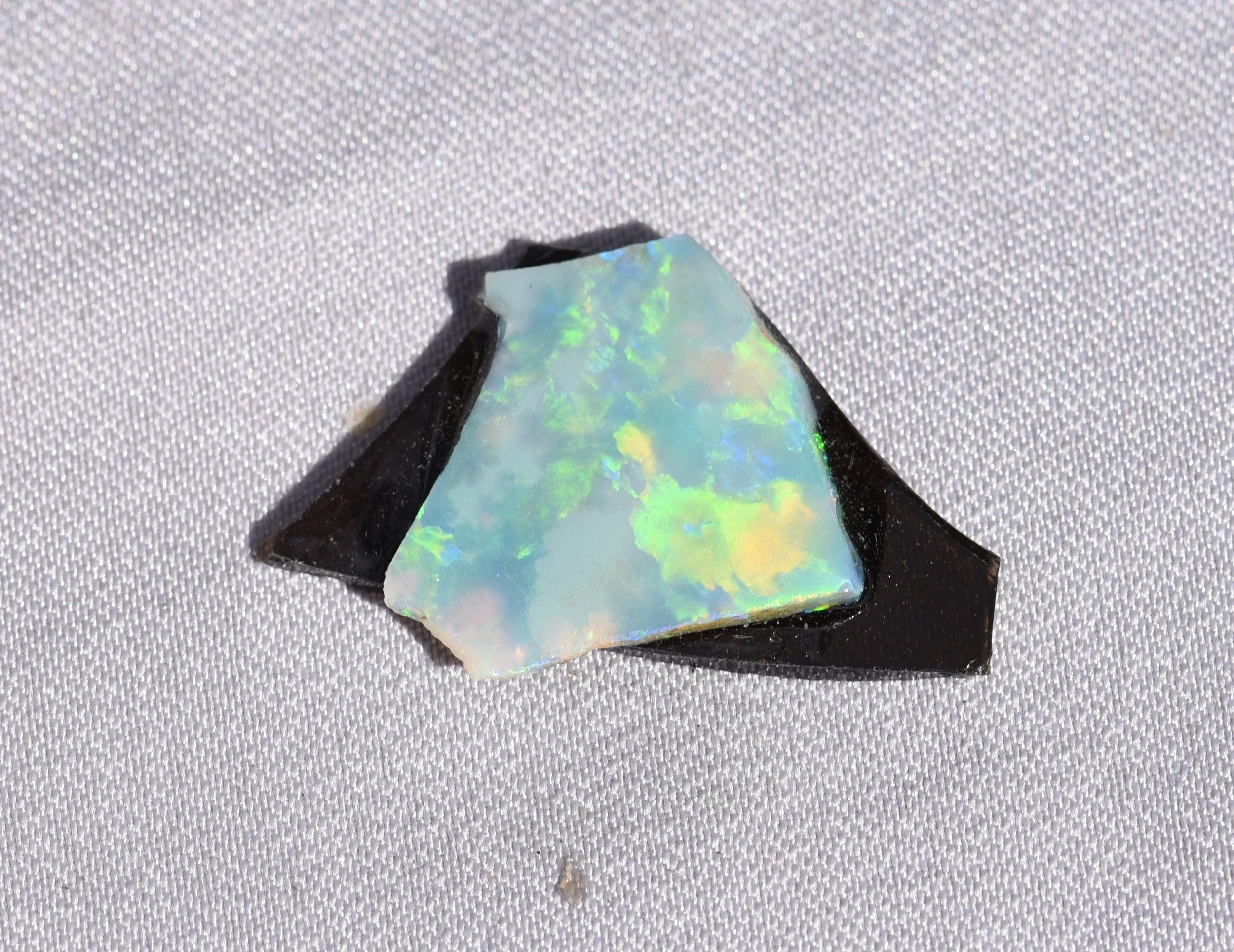What is matrix opal?
Matrix opal has been defined as “opal presented in one piece where the opal is intimately diffused as infillings of pores or holes between grains of the host rock in which it is formed”.
In the original nomenclature published in the Australian Gemmologist Volume 19, Number 12, 1997 which you can read in the literature section of the website, or you can check out the Nomenclature page here………
There are however a few idiosyncrasies and perhaps difficulties that arise in a discussion of “Matrix” opal. There are two descriptions of “Matrix” opal that result from the way in which terminology has grown up through the years of discussion with opal miners, and opal industry people. This means that on different opal fields in Australia, the term “Matrix” has been used in common language.
“Matrix” (the name or word on its own) is slightly different to the term “Matrix opal” as described above, and the two terms have different meanings, to different people.
The term “Matrix” on its own is used in Lightning Ridge opal fields as referring to a material that is in most instances a grey , and often swirly “mixed-up” material that often is seen as a cap on black opal nobbies, or as a layer on the top of incorporated in a layer of seam opal. (See photos and discussion below). In Lightning Ridge this material is believed to be unhelpful when fond associated with the “colour bar” of a piece of opal. In many instances the “matrix” is detrimental and needs to be removed form the “colour” during the cutting process, or the finished gemstone may be unstable. Our research team is presently investigating this material more from a scientific point of view.
The term “Matrix Opal”, is a term that has become associated in particular with material that is mined in abundance in Andamooka, in South Australia, and so a discussion about Matrix opal will be different because of this association.
“Precious Matrix Opal” is the type of opal listed in the nomenclature as described above. If the opal component, shows the “Play-of-colour” (POC), that precious opal is well known for then the term “Precious Matrix opal” is a suitable term. In this variety of opal, it could be said that the “rock” is more predominant than the “opal”
Precious Matrix opal comes in a number of varieties, usually described as “Andamooka Matrix” or “Boulder Matrix (Queensland Ironstone matrix), or “Sandstone Matrix” (Queensland sandstone matrix).
Natural Precious Matrix opal from Andamooka in South Australia, occurs in a number of different varieties, Most of the natural material is in light coloured rocks, of two types, Matrix opal and “concrete” (a colloquial term for a slightly more coarse variety) “Concrete” has now been termed as “Rainbow” matrix opal which may well be a more suitable commercial term. Precious Matrix opal also occurs as “Natural black matrix”, (this material has a natural black background or body colour) and “Natural Honey Matrix”, (this material has a natural yellowish body colour).
The lighter body coloured Andamooka matrix varieties are in some instances are quite porous and absorbent, and in such forms can be treated to make the surface of the material turn black, which is a treatment used historically for a long time. Hence the term often used for this material is “treated Andamooka matrix”. Processes of treatment will be described later in another post.
It is also interesting to note that there are a number of other different varieties of matrix opal that are found in Andamooka. Those varieties mentioned are the varieties that are usually commercially available.
Boulder matrix opal is a variety of matrix opal found almost exclusively in the boulder opal fields in Queensland (Australia). In this material, the opal infills either the voids in some ironstone nodules such as Yowah nuts, or the rim of some ironstone concretions. Sometimes in the Queensland opal fields, the opal infills the interstices between the grains of the sandstone, and acts as the cementing material between the sandstone grains, this is more correctly termed “Sandstone matrix opal”.
If the stone shows POC, then more correctly the material can be labelled “Precious Boulder matrix opal”
In adding to the possible confusion, may people just using colloquial language may refer to these materials simply as “Boulder matrix” which can be unfortunate. Again there are a number of varieties, and these are illustrated below. Also these materials are sometimes “treated” to darken the background or body colour. One commercial variety is often labelled “Fairy stone”.
Matrix opal are also found in overseas (foreign) occurrences. Matrix opal is known from Honduras, and Mexico. Louisiana state in the USA has a less well known occurrence as is an occurrence in Mississippi State USA,
We are presently trying to source and describe other forms and occurrences where “Matrix” opal is found, as well as further descriptions of different Matrix opal specimens especially related to Andamooka in South Australia, which always appears to through up new forms and varieties. It is possible that Andamooka is the “capital” of matrix opal!
A group of Lightning Ridge opals, a seam opal on top, the matrix is on the top, left a “chinaman’s hat nobby with a matrix top, and the left a flat nobby with grey matrix on a colour bar of blue/violet POC.
A pair of Lightning Ridge Nobbies with “Matrix tops. The matrix is the grey material on the top of black potch opal. The white material is “sand” or sandstone left on the nobbies.
ANDAMOOKA MATRIX OPAL
It is very interesting that Andamooka in South Australia is well known for its production of different types of “Matrix” opal. The series of photos below represent the natural untreated “Matrix” opal. Below these natural materials are the images of “treated” Andamooka matrix opal, it is perhaps unfortunate that Andamooka is in some ways more well known for the “treated” material than its spectacular natural precious opal. You can read more about Andamooka precious opal here…..(new post under production!
A piece of rough Andamooka light matrix opal, untreated showing a subdued red pinpoint POC
A piece of rough sawn Andamooka light matrix opal “rainbow opal or “concrete” untreated, showing a subdued orange-red POC
Natural (untreated) Andamooka black precious matrix opal.
Natural (untreated) Andamooka “Honey” precious matrix opal
TREATED ANDAMOOKA MATRIX OPAL
The traditional method used for treating Andamooka matrix opal is a process that uses sugar and acid. You can read about the process in a separate discussion on the opal academy (Curators note, we are updating our discussion on “opal treatments” and the section is not completed yet!
A rough piece of treated Andamooka matrix opal.
The piece of rough Andamooka treated matrix (shown left), which has been sawn through to show the depth of the treatment is essentially only “skin” deep.
A cabochon cut treated Andamooka Matrix opal. Note the “black spots” look like “pepper” which is indicative of treatment.
A pair of large treated Andamooka “Rainbow” matrix opal specimens.
QUEENSLAND BOULDER MATRIX
As illustrated in the photos below, “Matrix” opal from the boulder opal fields in outback Queensland occurs in two different forms, precious opal intimately filling spaces or cavities in ironstone nodules, and precious opal filling the interstices between the grains of a sandstone. It is interesting that even from the early days the sandstone facies was named by geologists as “the desert sandstone”, as this area of out the outback has its own special characteristics.
A parcel of rough ironstone precious boulder matrix pieces
A light coloured ironstone boulder matrix opal.
A slab cut rough piece of Boulder sandstone matrix opal.
A portion of a strand of “Fairy stone” black treated precious boulder sandstone matrix opal.
OVERSEAS OCCURENCES OF MATRIX OPAL
A rough piece of natural (untreated) Honduran black basalt matrix opal.
A cabochon cut piece of precious black “Leopard” Mexican matrix opal
A specimen of matrix opal from Mississippi State USA, photo provided by Matthew Forir and Don Hoover.
Two pieces of sawn rough matrix opal from Louisiana State USW, the right hand piece has been treated, it is interesting to note that the opal has taken the treatment which suggests it may be hydrophane opal.


































